Posted June 1, 2014
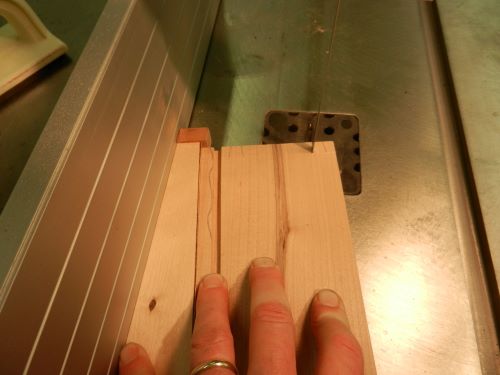
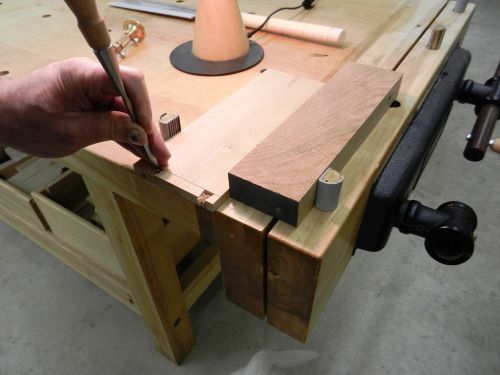
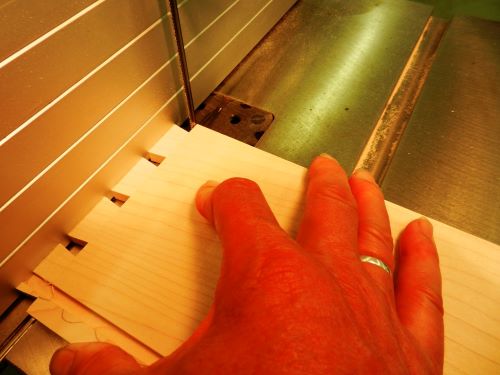
The rear dovetails on all of these drawers will be simple through dovetails, generally with only two pins being sufficient but adding an extra as the drawer sides increase in width. Although I will cut off the very bottom of the drawer back even with the top of the dado made for the side to slide in, I leave the dadoes in the back so as to insure accurate layout of the dovetails. I begin by marking the tail board and cutting it out using the 1 in 7 jig previously made for the band saw. Next the tail board is chiseled out and cleaned up in order to overlay it on the pin board for accurate tracing of the pins. The two boards are overlaid with the pin position accurately traced onto the pin board and then marked down to the line for cutting with the handsaw. I’ve tried several dovetail saws including a very nice Lie-Nelson, but I seem to get the best results with this Japanese Shinwa Dozuki, which like most of these Japanese saws, start cutting on the back stroke. This is probably the hardest part of cutting dovetails for me, and this saw really helps. Next, I clean up the ends of the pin board by cutting it very close to the line with the band saw fence.
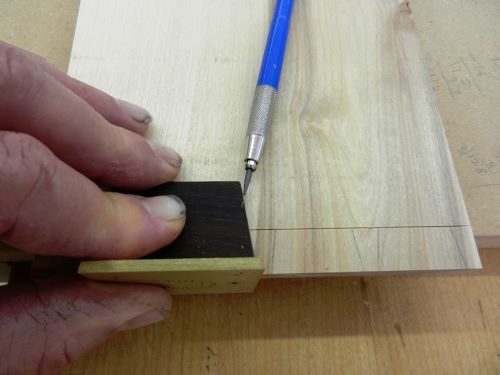
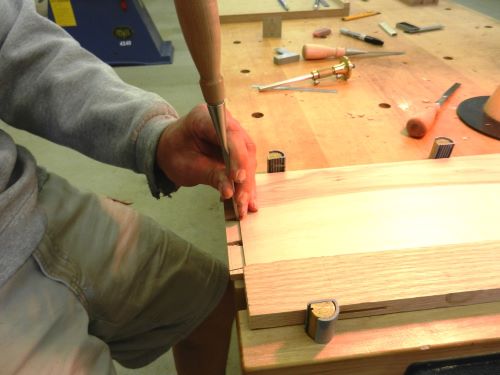
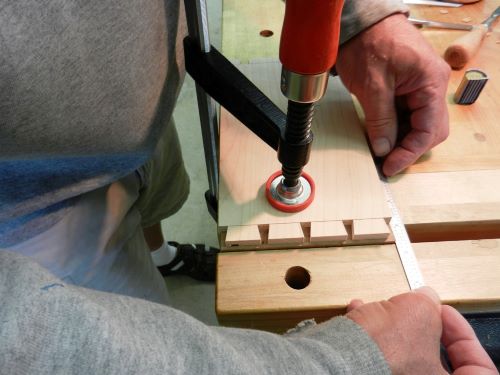
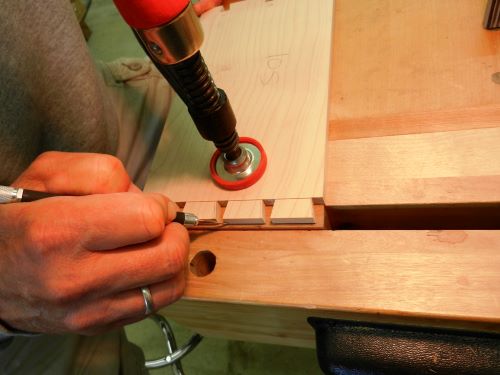
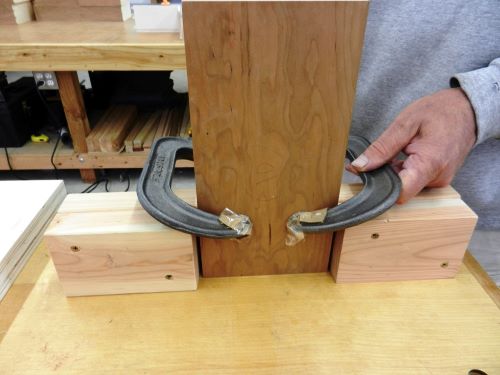
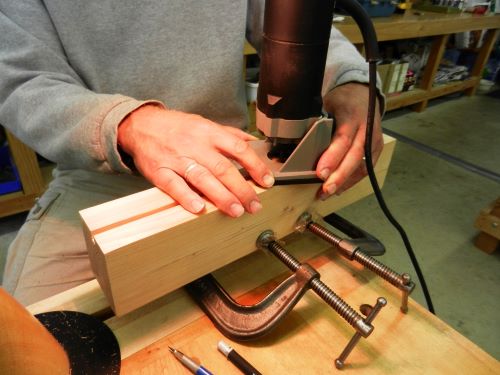
On the drawer faces, the half-blind dovetails are started by cutting a rabbit on the inside of the tail board ends exactly the width of the dovetails and then marking the tails with the dovetail gauge. The tail boards are then cut on the band saw, cleaned up with a chisel, and then overlaid on the pin board ends for aligning and marking with a sharp knife. After marking, the pin board is put into a simple jig to hold the piece steady so the waste can be routered (or chiseled) out.
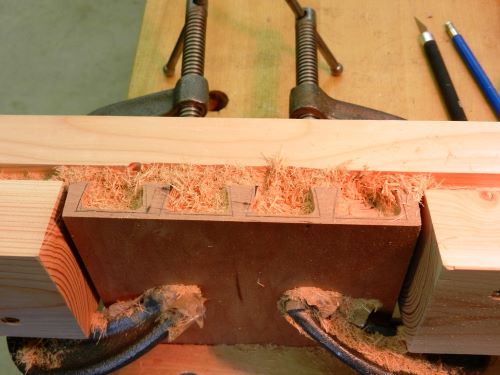
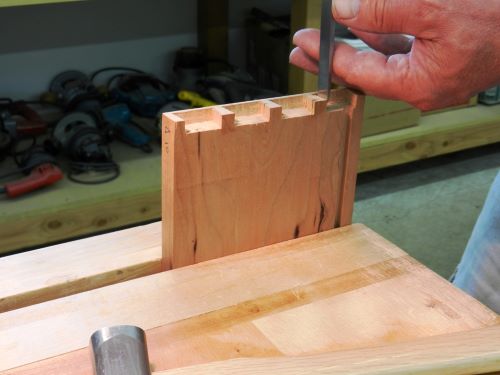
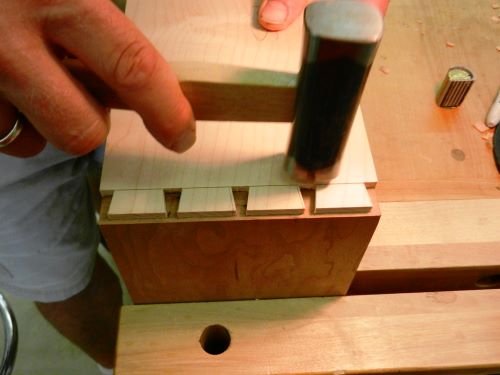
After routering, the pin board waste is cleaned out with a sharp chisel and fitting with the tail board can begin. The piece was finished with several coats of wipe-on tung oil finish, sanding between coats with up to 600 grit.
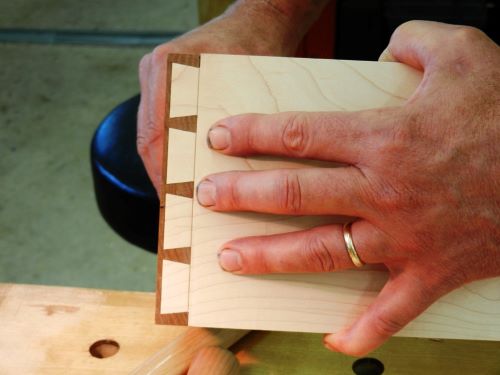
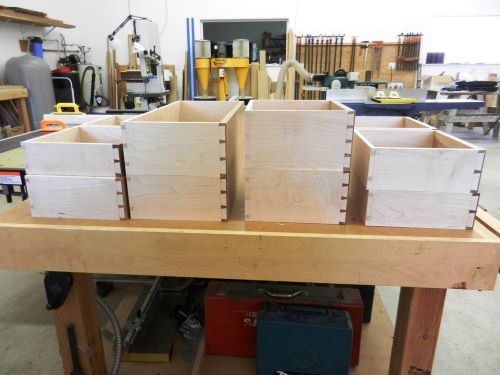
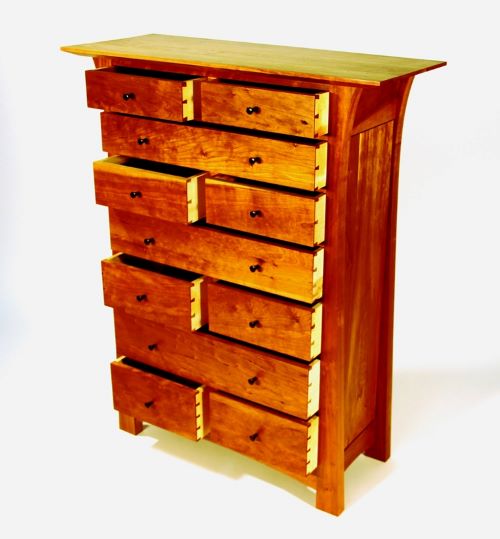
Back To Top Home